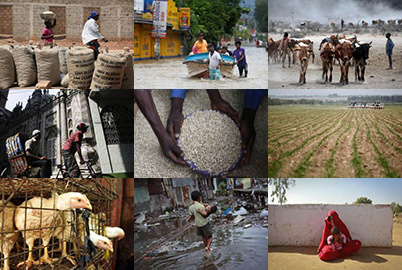Oct 13 (Reuters) - Forces loyal to deposed Libyan leader Muammar Gaddafi have fought tenaciously for weeks in Sirte nearly two months after rebels seized the capital Tripoli.
Now that the town, Gaddafi's birthplace, has all but fallen, more evidence is emerging of the extravagant lifestyles which he, his family and members of his entourage had enjoyed.
Over the last 30 years, a number of fallen rulers have had to flee in a hurry, leaving behind the physical evidence of their time in power.
Here are a few details:
* LIBYA: After Muammar Gaddafi's flight from his Bab al-Aziziya (Splendid Gate) compound in Tripoli, rebels found golden pistols and a peacock-feather flyswatter topped with a gold elephant. A photo album of former U.S. Secretary of State Condoleezza Rice was also found. She had visited Libya in 2008.
-- Some rebels seized Gaddafi's golf cart, which they took for a joyride around the capital.
-- In Gaddafi's home town of Sirte, there were more displays of wealth in the Ouagadougou conference centre, a complex he had built to host foreign leaders.
-- NTC fighters also found another golf cart with a wooden steering wheel and a Cadillac emblem on the radiator grill.
* IRAQ: -- Saddam Hussein was ousted after U.S. and allied forces invaded Iraq in 2003. Looters roamed the streets of Baghdad breaking into government buildings and Saddam's palaces.
-- About ${esc.dollar}950 million was discovered by U.S. soldiers after the war's end in various palaces belonging to Saddam and his family, in Iraqi government guest houses and even dog kennels. The money had been crammed into 191 boxes.
-- Iraqis looted Saddam's palace in Tikrit, carrying away paintings, ornate furniture, silk Persian rugs, vases, chandeliers and Saddam memorabilia such as paper carrying the embossed presidential letterhead. Looters also ransacked the Al Faw palace in Hillah of anything of value.
-- Looters targeted Saddam's most lavish palace on a bluff overlooking the Tigris River, when it was handed over to Iraqi authorities in Nov. 2005. They ripped out doors, air conditioners, ceiling fans and light-switch plates.
* ROMANIA -- Nicolae Ceausescu built the People's House, the world's second-largest building in surface area (after the Pentagon) and the third-largest in volume. Ceausescu's greatest folly, begun in 1984, required 20,000 workers, 700 architects and the equivalent of more than 3 billion euros.
Some 3,500 metric tonnes of crystal were used for the 480 chandeliers. After Ceausescu's fall, the new government moved its functions into the building and it was renamed the Palace of Parliament.
* PHILIPPINES -- When Ferdinand Marcos fled, U.S. Customs agents discovered 24 suitcases of gold bricks and diamond jewelry hidden in diaper bags. They also found certificates for gold bullion valued in the billions of dollars.
-- His excesses were most graphically illustrated by his wife Imelda's extravagance. When the couple were forced out of power in 1986, she left behind 15 mink coats, 508 gowns, 1,000 handbags and up to 3,000 pairs of shoes.
* DEMOCRATIC REPUBLIC OF CONGO, formerly ZAIRE: -- Zaire's Mobutu Sese Seko was president for 32 years until he was overthrown in 1997. He had spent millions of dollars to construct an enormous airport, and three palaces at Gbadolite, his ancestral home. Gbadolite, nicknamed "the Versailles of the jungle", was the last place he stayed in Congo before he fled to Morocco.
-- Mobutu's palaces have since fallen into ruin, looted by successive rebel armies. (Reporting by David Cutler, London Editorial Reference Unit)
Our Standards: The Thomson Reuters Trust Principles.

